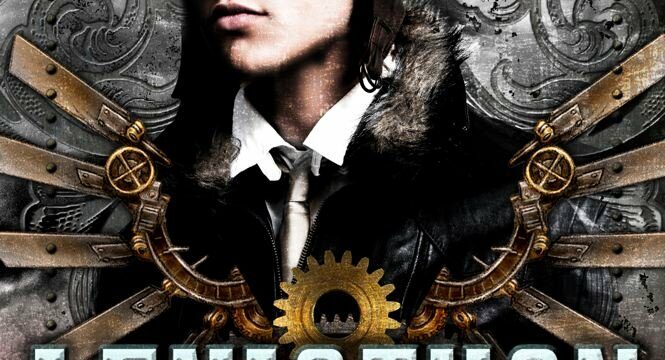It’s World War I. The Austro-Hungarian prince is on the run, while a British girl disguises herself as a boy in order to serve in the British Air Service. That in and of itself is a story I’d love to read. Add in the idea that the Austro-Hungarians fight with steam-driven iron machines called Clankers, and British Darwinists use fabricated animals as airships, and I needed that book in my hands ASAP.
Scott Westerfeld’s Leviathan trilogy may have ended five years ago, but it remains, in my humble opinion, one of the coolest, most unique trilogies in YA fiction. Not just because the characters are great or the story keeps you on the edge of your seat, but because of Westerfeld’s totally bananas vision when he sat down and decided to write World War I in the steampunk genre. If the series escaped your attention, you should definitely be checking it out ASAP.
Not convinced that steampunk is your thing? Let me explain how steampunk is everyone’s thing:
Steampunk is, at its core, science fiction in a historical setting. Technology merged with an earlier time. Okay so technically, this is specifically supposed to include steam-powered technology (or maybe just those nifty goggles), but one look at Scott Westerfeld’s Darwin-inspired airships tells us that steampunk can basically include whatever technologies author wants.
Steampunk includes fantasy! Fans of Cassandra Clare’s Infernal Devices trilogy might be familiar with the merging of magic and tech, as Tessa and her fellow Shadowhunters must face off with clockwork automatons. And why not have a story about a clockwork army alongside vampires, demons, and warlocks? In fact…that kind of sounds like an ideal story. Where steampunk is concerned, it’s the more the merrier, and the technology can take a backseat to fantasy, or vice versa, depending on the book you’re reading.
It can also be more lighthearted. At this point, some of you may be thinking – okay, but what if I don’t want to read about warships and gloom and doom? Well, there’s still steampunk out there for you. In Gail Carriger’s Etiquette and Espionage books, a Victorian finishing school teaches its students all they need to know to survive high society, from proper manners to, yes, espionage. Throw in some vamps and werewolves, and you’re in for a hilariously good time.
Basically…steampunk elements can be bent to work with any genre. Cherie Priest’s Boneshaker includes much of the above (minus, perhaps, the finishing school) as well as…zombies. And pirates. And it rocks a dystopian vibe, even though it’s supposed to be an alternative Civil War novel. Which may sound like a lot to take in, but if it’s executed in the right way (and here it is!), it can turn into that amazing book that you never knew you were looking for, because you never thought to combine all those things in the first place.
Odds are, you’ve read or seen steampunk before. Recent hits like the Golden Compass and The Invention of Hugo Cabret are great examples of steampunk! I’ve even seen arguments that older classics, like Mary Shelley’s Frankenstein, also fit the bill. Considering Victor Frankenstein’s “science” was so ahead of its time, it’s a case worth listening to. Which just goes to show that this genre has been around for a long time, constantly being reimagined or stretched in new ways.


